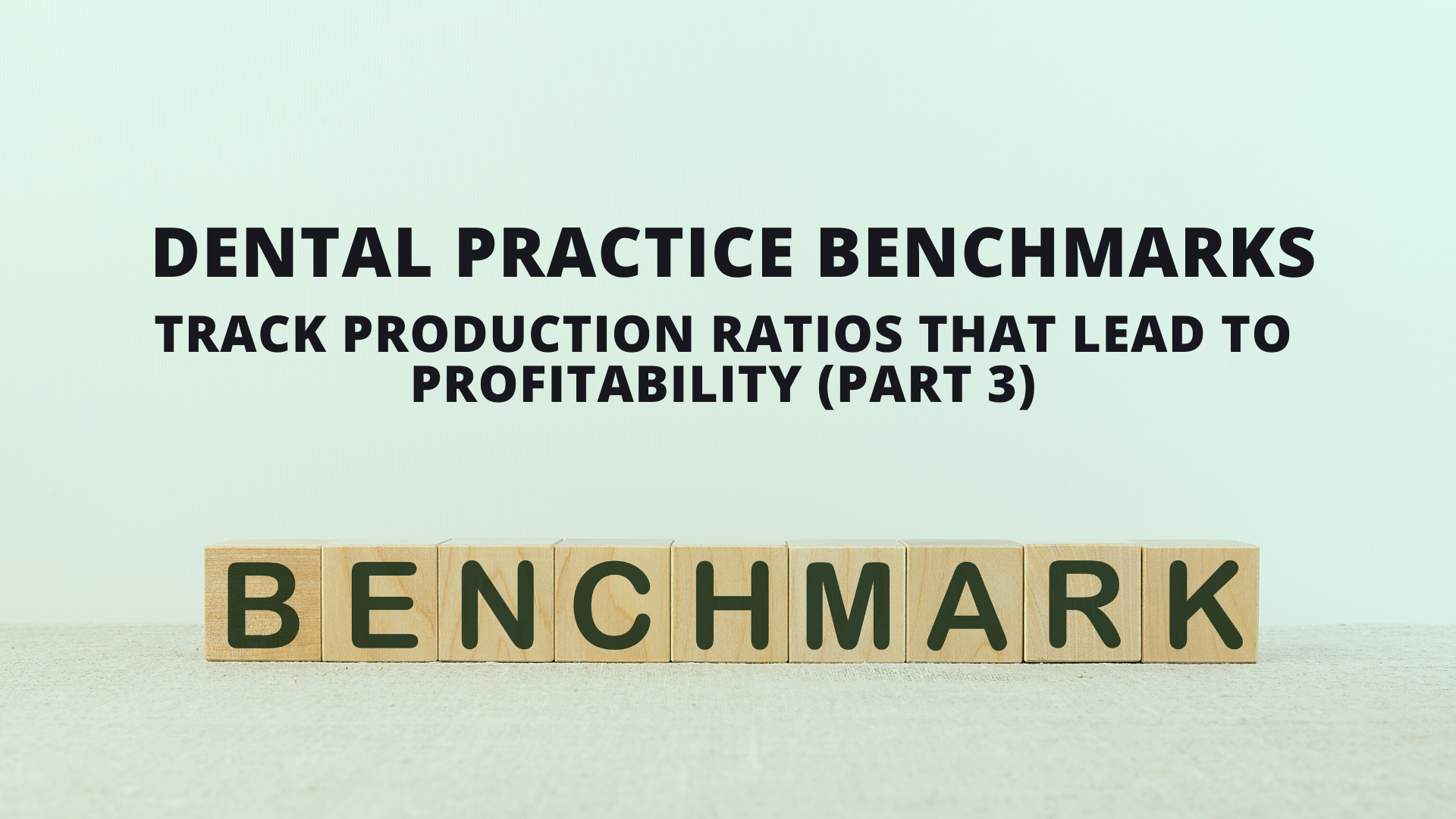What drives a dental practice?
In terms of financial outcomes, it would have to be production.
And in terms of practice production, it would likely be your staff to production ratios.
Not everything that’s measurable is worth measuring. Even so, it’s vital to your overall success that you’re monitoring resource allocation.
Showing up is only a small part of it
It goes without saying that a top-notch dental staff will show up ready to serve patients. What’s not guaranteed is the pace that helps achieve that primary goal.
Pacing can reveal much about an individual team member’s contribution to overall production numbers. A full schedule is optimum as long as production totals rise by comparison.
Back to the idea of pacing – the following data statements reveal what’s common for a dental practice team.
-
- A well-run practice focused on restorative dentistry will see nine to 15 patients per day (average is 10.38). This equates to two doctor treatment rooms, at least one hygiene room, and one to two full-time chairside assistants.
- Dental staffing needed in an office is driven by activity more than production. In this instance look at patient visits (pv) per day this way: seven to nine pv/day – one chairside assistant; 10 to 12 pv/day – one to two chairside assistants; 13 or more pv/day – two chairside assistants.
- Administrative staff totals for an office fall in a ratio range of: Eight to 21 pv/day – one administrative staff; 22 to 28 pv/day – one and a half administrative staff; 29 to 35 pv/day – two administrative staff.
Now for those ratios that make a difference
This third installment in our “benchmarks” series will wrap up our focus on the metrics that will help you streamline your patient care and hopefully increase your practice or organization’s profitability.
Production to patient ratio
Again, a full schedule is optimum. Converting examined patients to scheduled treatment is equally so.
But a deeper level metric is assessing your production per patient averages.
Do a schedule analysis to determine the average number of patient visits per day. Total your production averages per day for the same time period.
Divide the production per day average by the average number of patient visits. That total will reveal your daily production per patient.
If you experience a lower number than preferred, you have the opportunity to evaluate your services. Adding specific services or streamlining your current offerings can help increase your production totals.
Team member to production ratio
Scheduling savvy helps drive production values. Various team members tasked with scheduling are your leverage points for improvement.
Keep in mind that on average a dental hygienist will contribute approximately 30% of your total daily production. You, as the provider, round out the day’s totals by producing an approximate 70%.
These numbers could fluctuate, of course, based on team roles, workflows, and general scheduling initiatives.
AR (Accounts Receivable) ratios
On average, good collections hover around 95%. You’re also aware that maintaining a steady collections process requires time – and time can equate to practice costs.
No doubt, lost or unmonitored collections will impact your profitability. So it pays to guide and/or deploy your team members around this income-producing task.
Another AR zone involves your aging reports. This keeps you on top of your patient accounts with overdue balances and how long you have carried them.
A good benchmark would be to clean up your AR around those outstanding balances that are over 30 days. Routinely review these AR reports with your team to keep collections front of mind.
Dental hygiene production to overall production ratio
As you’re aware, your hygiene department creates an amount of practice revenue. Sure, there are other higher production services. But keeping your finger on the pulse of hygiene is essential to your overall practice revenue stream.
The recommended production range for hygiene compared to your total practice production is 25% to 35%.
And let’s keep practice overhead in perspective too
Your costs for staff, facilities, utilities, and supplies account for a substantial portion of your general operations. Maintain awareness of the firm and flexible costs of running your practice.
The better handle you have on your operational costs the better your projections and planning for the future.
And speaking of planning…
Check out the following related dental practice “benchmarking” resources in this series:
Practice Benchmarks: The Value of Your Active Dental Patient Numbers (Part 1)
Practice Benchmarks: Know Your Re-care Potential and Strategize to Reach It (Part 2)
Thanks to data analysis, you can make more informed financial decisions
The Jarvis Analytics platform helps assure that you’re tracking the important metrics and staying on track in your daily workflows and overall practice or DSO goals.
Jarvis…
- Integrates seamlessly with your chosen practice management software/platform
- Presents the metrics you want and need in an easy-to-view dental dashboard that reduces data complexity for growing dental practices, dental groups, and DSOs
Experience Jarvis in action. Request a demo today!
Or…
Contact us for more information about data tracking that leads to profitability.
LIKE WHAT YOU SEE & READ?
Join thousands of other people, subscribe to our newsletter, and get valuable business tips delivered right to your inbox.


